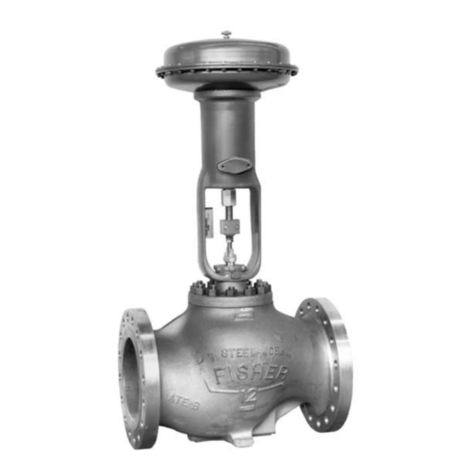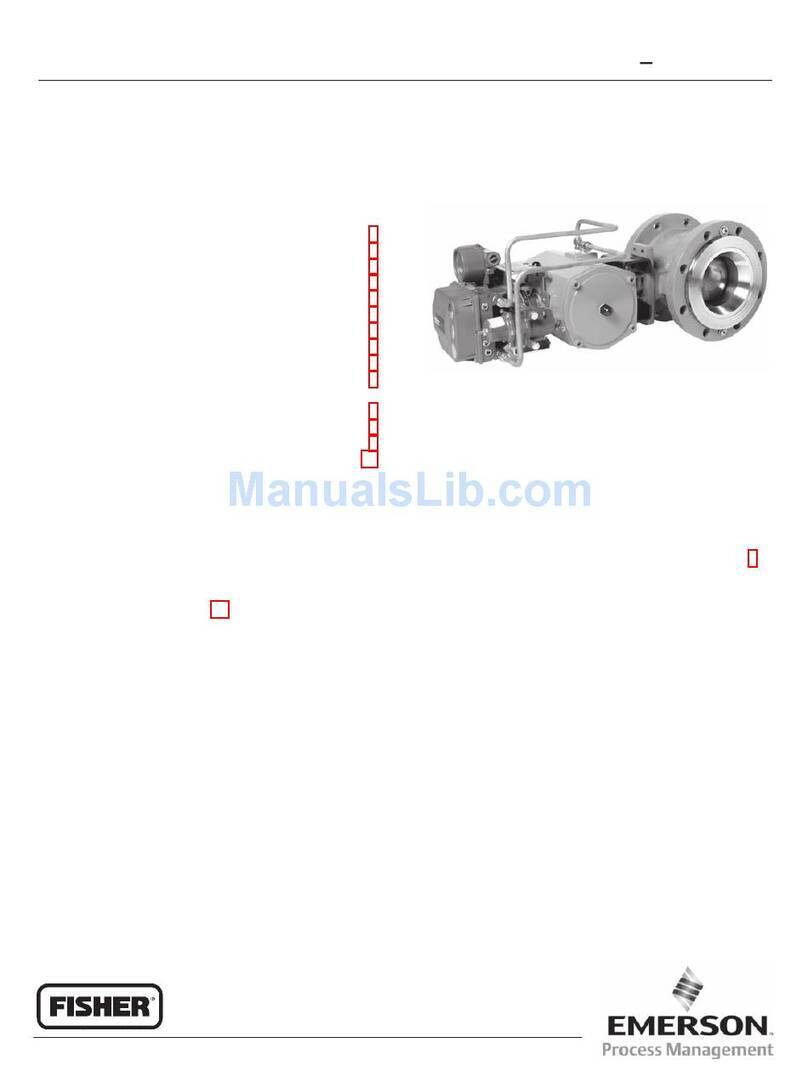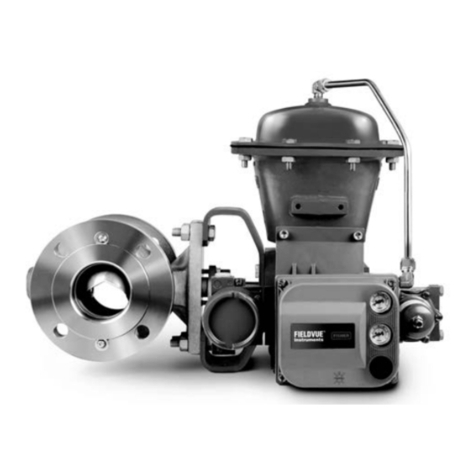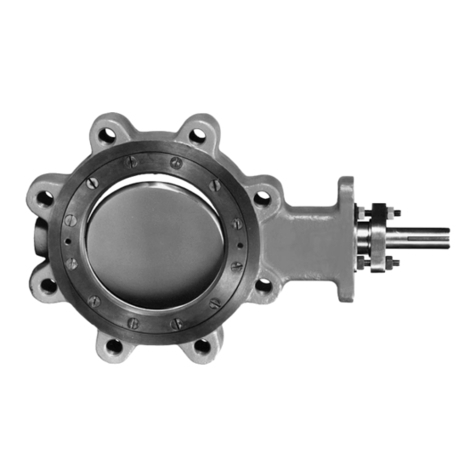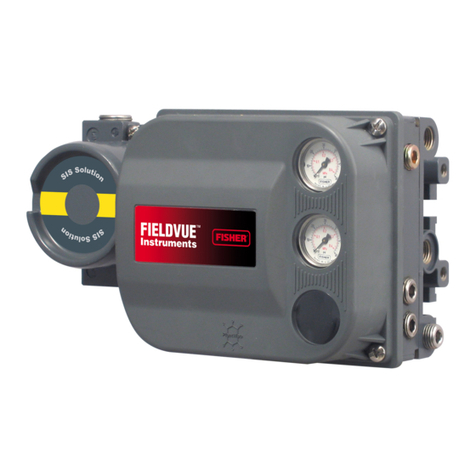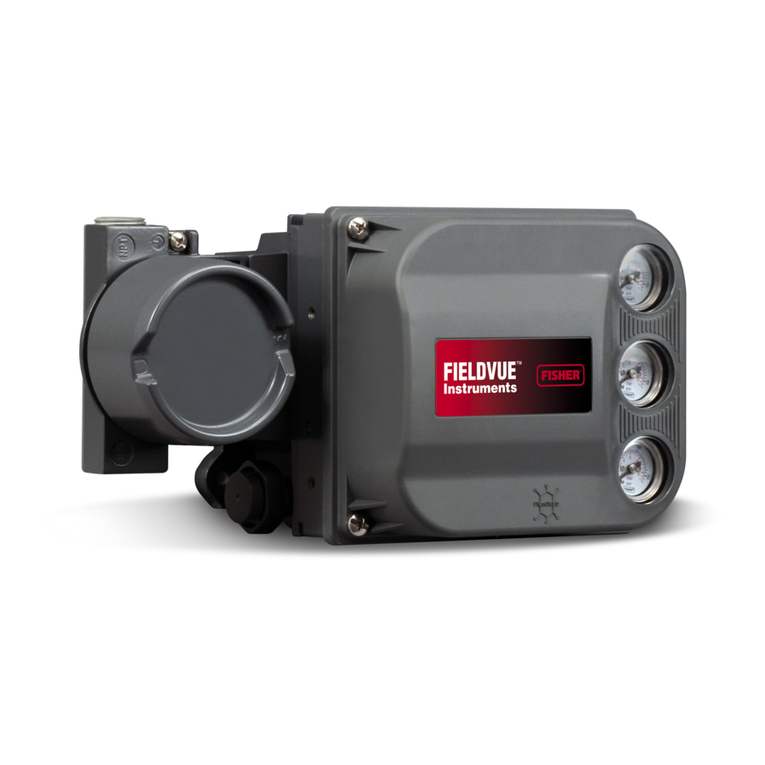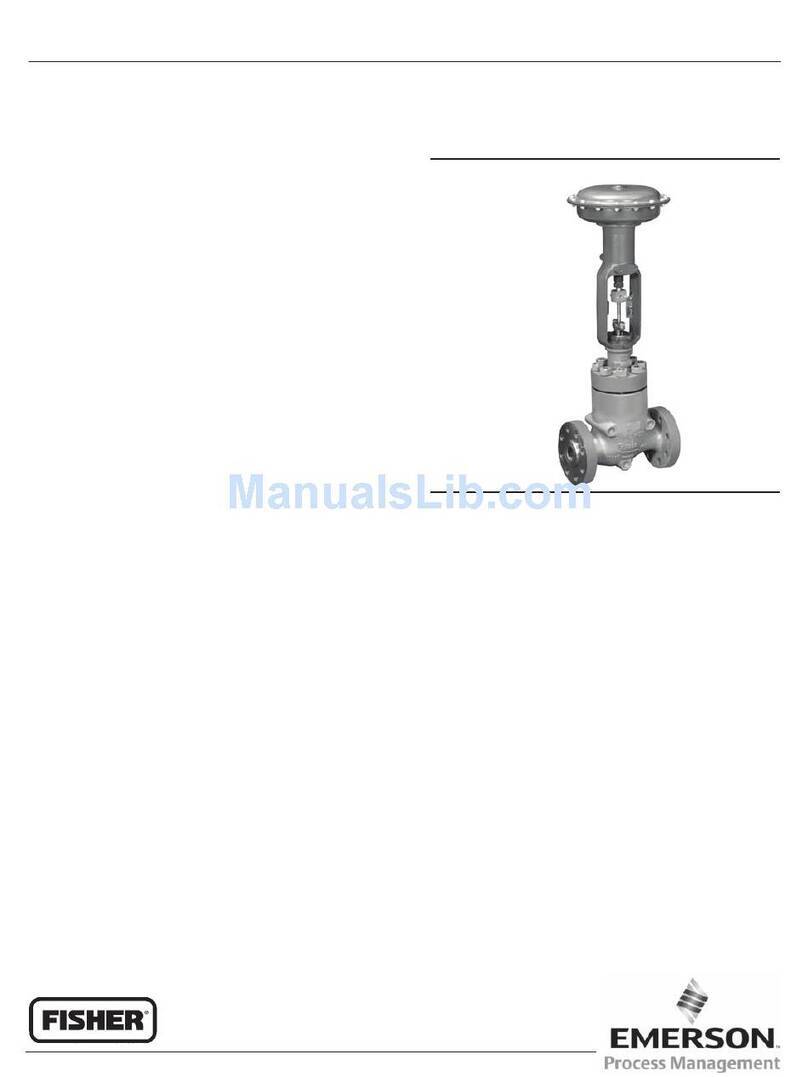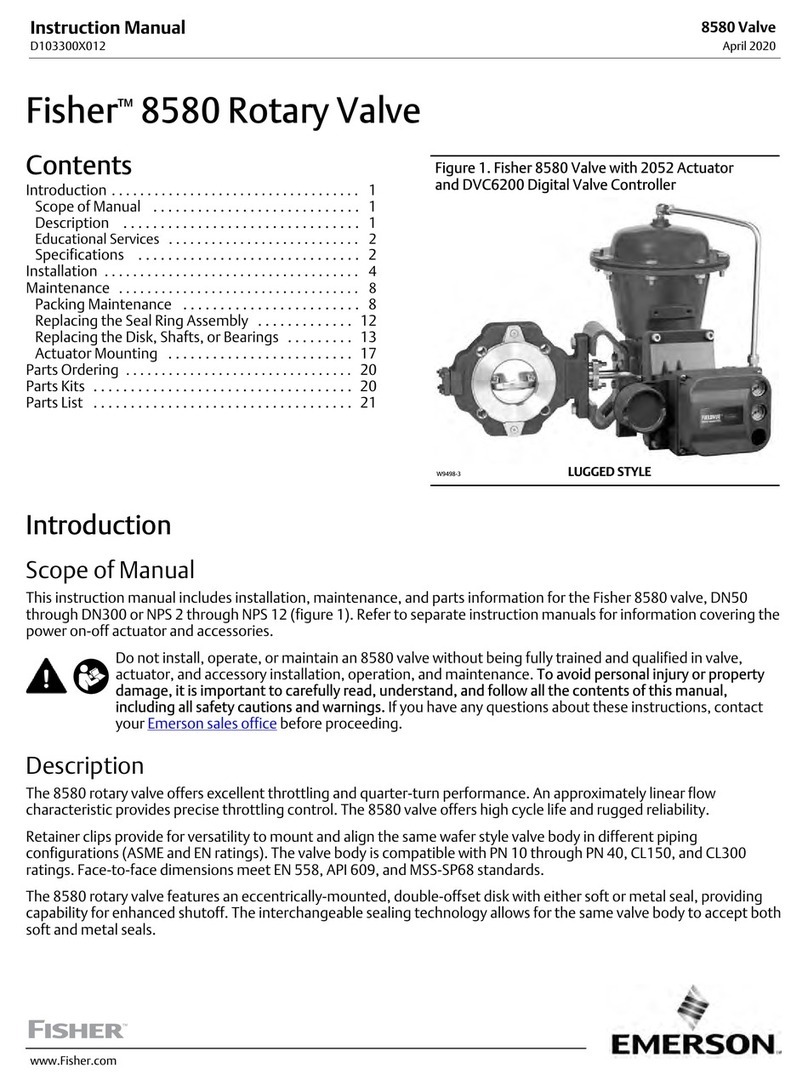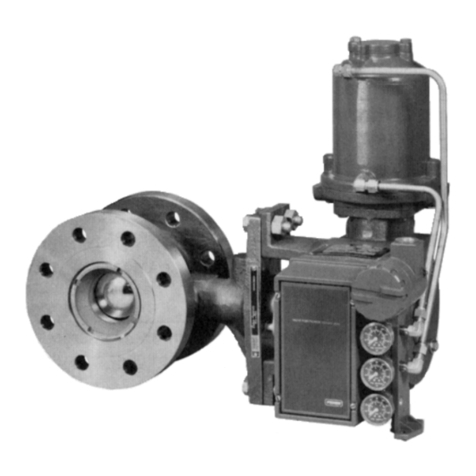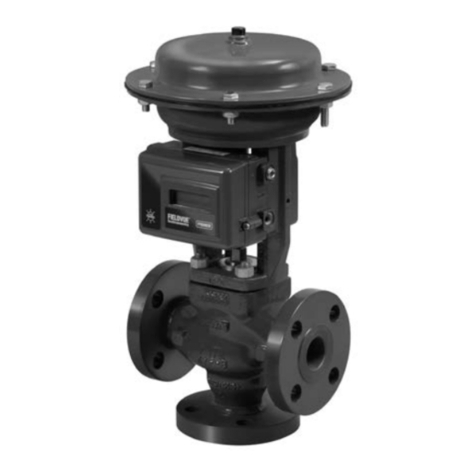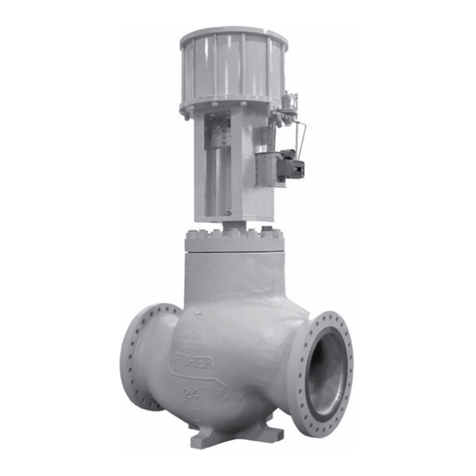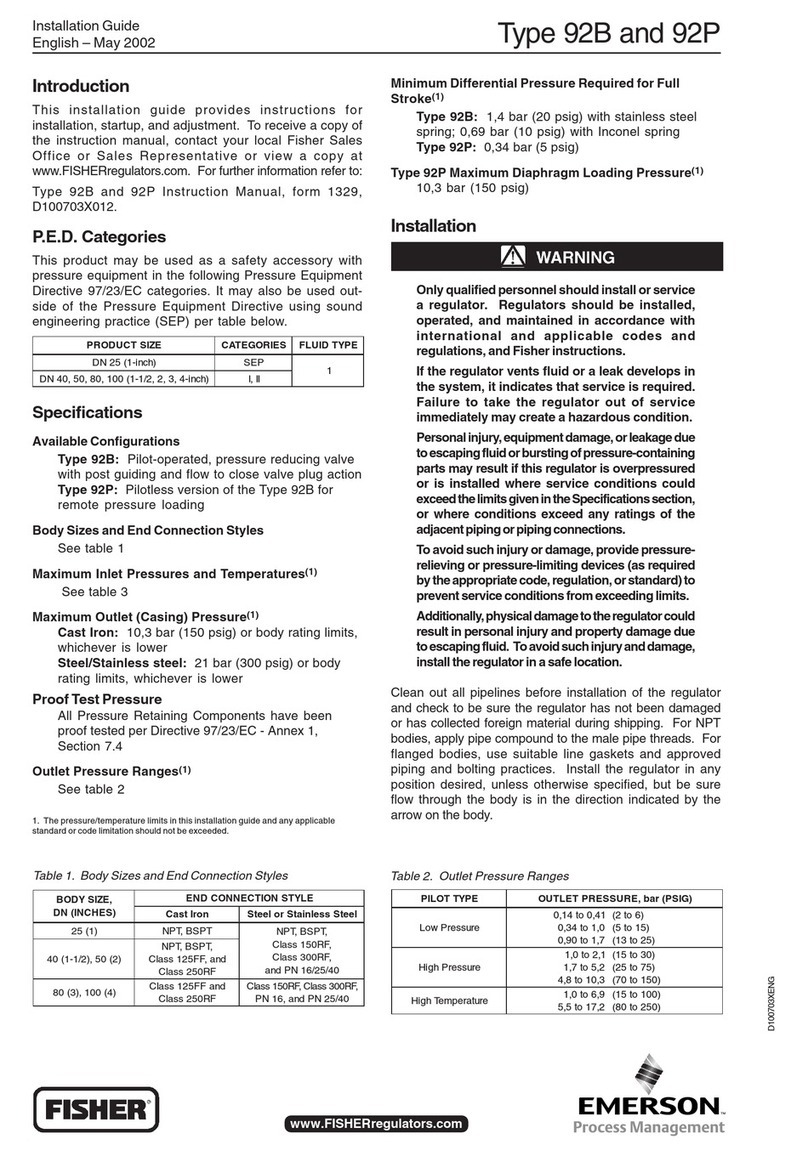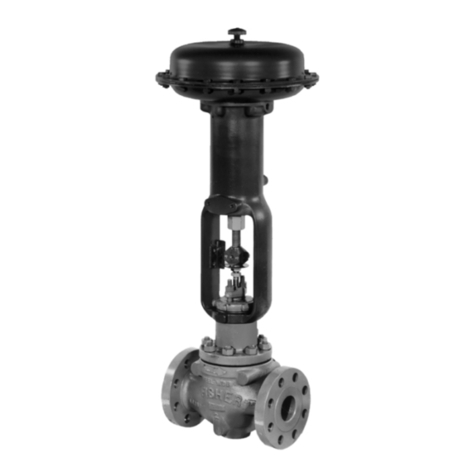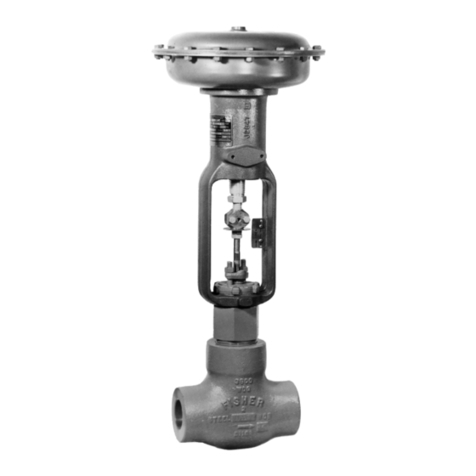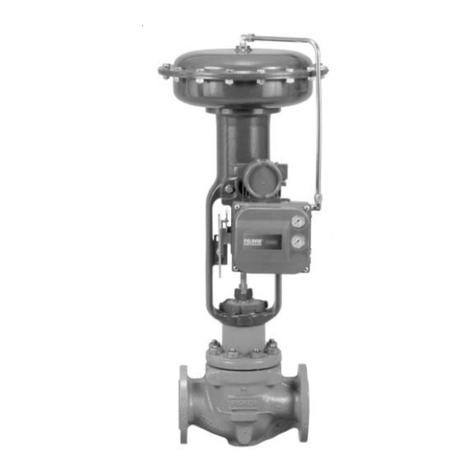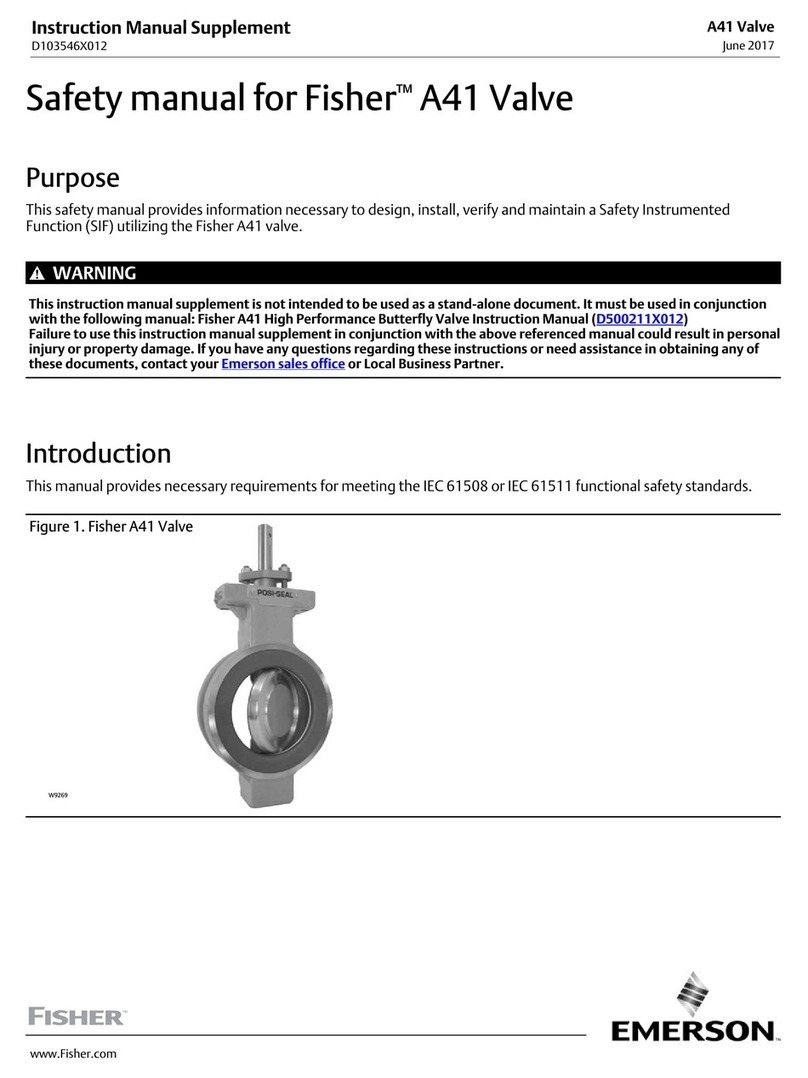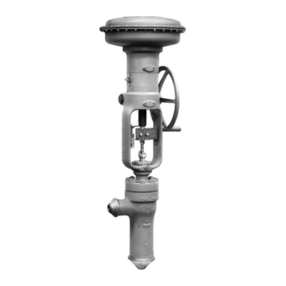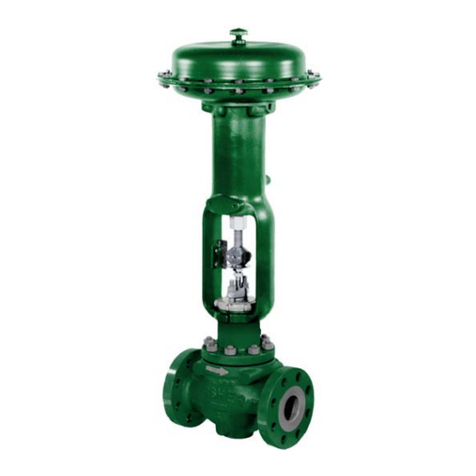
Type 9500
9
Actuator Mounting
1. Refer to the appropriate actuator instruction manu-
al to determine the desired actuator mounting style
and position. With the valve out of the line, mount the
actuator on the valve per instruction in the actuator
instruction manual.
2. To determine the fully closed disk position, mea-
sure the distances between the valve face and the top
and bottom edges of the disk as shown in figure 2.
The disk is at the fully closed position when the two
measurements are equal. Rotate the disk slightly if
necessary to make the measurements equal.
3. Refer to figure 6 and locate the view that depicts
the mounting style and position that is being used. In
the appropriate view on the right of figure 6, note the
positions of the index marks on the end of the valve
shaft and actuator lever. For all positions and styles
with 90-degree disk rotation, the shaft index mark is to
be aligned with the appropriate lever index mark as
shown in figure 6. This is also true for push-down-to-
open action with 60-degree maximum disk rotation.
However, for push-down-to-close action with 60-de-
gree maximum disk rotation, the appropriate lever in-
dex mark must be offset one or two spline teeth coun-
terclockwise from the shaft index mark.
Refer to the appropriate actuator instruction manual
for instructions covering attaching the lever and adjust-
ing the turnbuckle. For Fishtail disks, be certain that
the direction of rotation will be such that the tail of the
disk (see figure 2) will rotate into the downstream side
of the valve.
Changing Disk Rotation and Action
Disk rotation can be changed from 0-90 degrees or
vice versa by changing travel stops in the actuator
and, if necessary, changing the position of the lever on
the splined valve shaft. Action can be changed from
push-down-to-open to push-down-to-close by remov-
ing the actuator and remounting it in the alternate
mounting style. Refer to the appropriate actuator in-
struction manual for assistance in disassembly and
reassembly to change travel stops and for instructions
to change mounting style.
Note
Action for valves using a splined valve
shaft can also be changed, without
changing mounting style, by reposition-
ing the actuator lever on the valve shaft.
For Fishtail disks, it will be necessary to
rotate disk 180 degrees so that the tail
of the disk will rotate into downstream
side of the valve.
Use the following procedure.
1. Refer to the appropriate actuator instruction manu-
al for assistance in disconnecting and removing actua-
tor lever. Avoid disturbing actuator turnbuckle adjust-
ment, if possible.
2. If valve disk is a Fishtail disk, rotate disk 180 de-
grees from the original position.
3. Position disk in fully closed position. To ensure that
disk is fully closed, measure equal distances between
valve face and top and bottom of the disk as shown in
figure 2 or check to be sure that the flat spot or index
mark on valve shaft is in top-dead-center or bottom-
dead-center in relation to the valve.
4. Note position of valve shaft index mark. Index mark
alignments for reversed action are not shown in figure
6. To determine proper index mark alignment, proceed
as follows:
a. Stroke the actuator to valve-closed end of travel
and retain that position while performing the next
step.
b. Keeping hands away from actuator rod, hold the
actuator lever up to valve shaft so that the lever
end is in line with actuator rod end bearing. The
lever index mark that is most nearly in line with
valve shaft index mark is the index mark that must
be used during reassembly. If changing to push-
down-to-close action with 60-degree operation, the
lever index mark will be offset 1 spline tooth from
valve shaft index mark for 1/2 through 3/4-inch
(12.7 through 19.1 mm) valve shafts and 2 spline
teeth from valve shaft index mark for 1 and 1-1/4
inch (25.4 and 31.8 mm) valve shafts. This offset
must be maintained during reassembly.
5. Record the alignment determined in step 4, remove
actuator lever, and shut off operating pressure to ac-
tuator.
6. Reassemble lever to actuator and adjust actuator
travel, if necessary, referring to the steps in the ap-
propriate actuator instruction manual. Be sure to use
the index mark alignment determined above rather
than those shown in figure 6.
Parts Ordering
A serial number is assigned to each valve body and
stamped on the nameplate. Always refer to the serial
number when corresponding with your Fisher Controls
sales office or sales representative regarding spare parts
or technical information. When ordering replacement
parts, also specify the complete 11-character part num-
ber from the parts list information.
